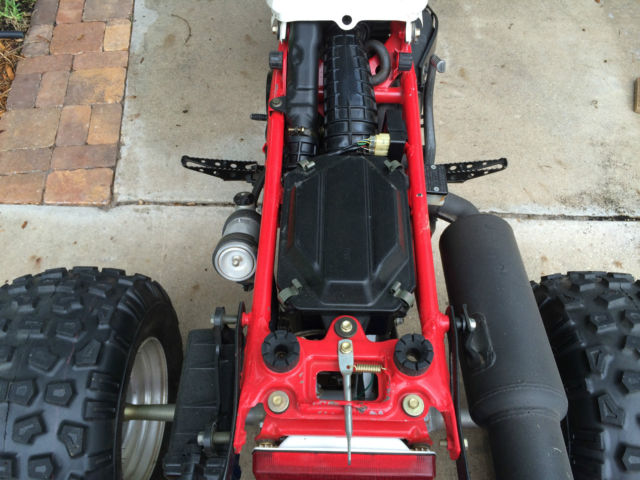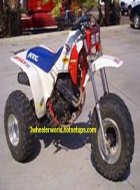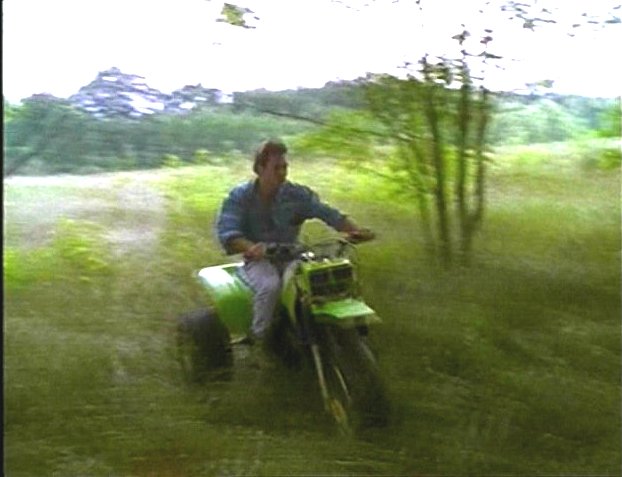

1985 – 1986 Honda 350X Specs & Features EngineĪn air-cooled, forward-inclined 4-stroke OHC power mill with an 81 × 68 mm (3.19 × 2.68 inches) bore-stroke ratio, an 8.5:1 compression ratio, and 4-valve-per-cylinder design powers the vehicle. It featured components somewhere in the middle of Honda’s top-end and entry-level trikes back in the day, making it a perfect go-to vehicle for recreational riders.Īll in all, it is a much-coveted trailer and racing machine, given proper upkeep, performance mods, and a skilled rider. On the outside, it looked like a three-wheeled UTV stripped off of its cargo racks. Nonetheless, the Honda 350X had some impressive features – including nearly doubling the displacement of earlier generations of the Big Red series. Instead, its suspension system featured a leading-axle fork as opposed to a trailing-axle design. Interestingly, it was also the only Honda ATC that was not equipped with the Pro-Link rear suspension found on its siblings – a requisite back in the day for Honda racing bikes. Everything else about the machine remained untouched. The only notable changes to the wheeler are the increase in carb size (from 31 to 32 mm) and the oil pump upgrade.

Often compared to the ATC250R, this Honda ATC received little to no improvements during its short-lived production run. Consequently, Honda did not have the opportunity to further develop the machine, as the industry shifted its direction towards four-wheelers. Due to the 1988 Consent Decree (or ATC ban), it only lasted in the market for two years before its demise. However, it turned out to be more of a sport machine than a racer. Honda engineers had racing in mind during the design process of the trike. Introduced in 1985, the Honda 350X launched during the height of the ATC craze, alongside other revolutionary machines – and had a lot of promise. The Honda 350X ATC is 9th in the line of all-terrain cycles and the 3rd generation of Big Reds released by Japanese manufacturer Honda. But if you are not quite convinced, this guide will enlighten you on the huge influence this three-wheeler had on present-day utility vehicles. Savvy aficionados would undoubtedly agree.

Despite its inability to execute fancy stunts and jumps and its need for body English to unleash its potential, the 350X was a standout, nonetheless. But no period is too short for something as great as this bike. The Honda 350X was only in the off-roading limelight for two years.
HONDA ATC 350X BACKFIRE AND STALL SERIES
It was the penultimate installment to the legendary Big Red series – a lineup of performance-built trikes designed for aggressive trails and racetracks. Produced from 1985 to 1986, the Honda 350X ATC (Big Red 350) featured crisp brakes, grippy tires, and a powerful 350-cc mid-range motor. Given its racing lineage and prestige, it would be fascinating to know what this reputable vehicle has to offer. This head-turner is not only a serious trail machine but also included in the illustrious Big Red bikes – a part of Honda’s sport ATC lineup that began in the ‘70s. The ATC250R remains a popular model for collectors due to its high-performance 2-stroke engines and racing heritage and the 4-stroke “X” ATCs continue to be popular trail machines.Disclosure: We may get commissions for purchases made through links in this post.Ī true off-roading enthusiast would undoubtedly recognize the Honda 350X ATC as the archetype of modern-day utility vehicles but with three wheels instead of four. This led to the creation of the ATC250R, a 2-stroke racing ATC based on the CR250 motocross line in 1981 and 3 more Sport ATCs, using 4-stroke engines. Originally catering to winter activity, campers, hunters and weekend Recreational riders that ATCs were envisioned for, their research showed there was a market for utility-focused machines for commercial and agricultural use, and dedicated sport models intended for leisure and competition use. As the popularity of ATCs exploded in the late seventies, Honda began to diversify their line. In 1970, Honda created the three-wheeled “All Terrain Cycle” market nearly single-handedly with the release of the Honda US90. The machines lacked luggage racks and other utilitarian features, commonplace on most other ATCs or ATVs. Honda Sport ATCs, produced until 1987, were built specifically for performance, and designed for use in racing, or for aggressive trail riding.


 0 kommentar(er)
0 kommentar(er)
